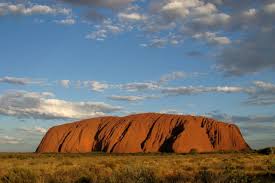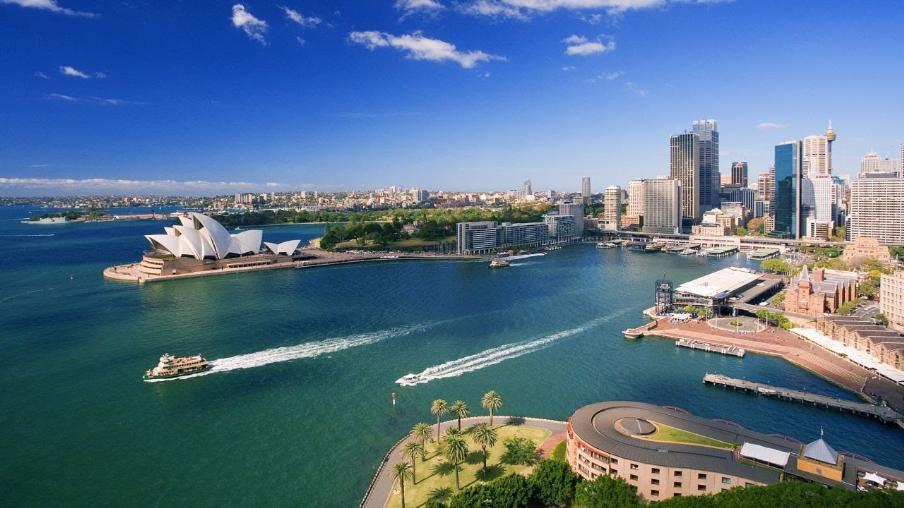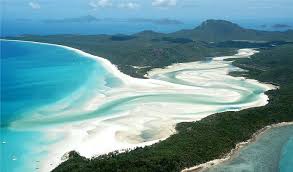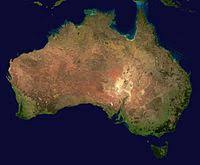Australia. Leichgardt
 By sending Sir Arthur Phillip and the first batch of convicts to explore Australia, the British government had little idea where these people were going. The only reliable information about the new southern land in 1787 could be considered the report of Captain James Cook, made by him, however, 18 years before the arrival of the first English fleet in Australia.
By sending Sir Arthur Phillip and the first batch of convicts to explore Australia, the British government had little idea where these people were going. The only reliable information about the new southern land in 1787 could be considered the report of Captain James Cook, made by him, however, 18 years before the arrival of the first English fleet in Australia.
The brilliant discoverer described in detail everything that he managed to see on the amazing continent of Aborigines and kangaroos. The only drawback was that all of these descriptions concerned an exceptionally narrow strip of the east coast of the continent from present Sydney to a large barrier reef and Carpentaria Bay. Of course, Cook did not reach the interior of the mainland. After all, he was still a navigator, and did not have the opportunity to explore such a large land. In fairness, it should be noted that even if he tried to do this, he would most likely fail. Indeed, even half a century after the landing of the first colonists, the inner regions of Australia still seemed to the new inhabitants something mysterious and inaccessible.
Even through the blue mountains located directly near Sydney, Australian researchers managed to cross only in 1813 under the fifth Australian governor Laclan Macquarie, 26 years after the colony was founded. Before that, the Blue Mountains simply could not be overcome. The fact is that they are very rugged by impregnable canyons, almost equal in depth to the height of these very mountains. Behind them, by the way, were magnificent meadows and pastures. Their discovery made possible the mass breeding of cattle and subsequently brought Australia to the forefront in this field of agriculture. Numerous farmers and squatters rushed to develop the discovered wealth.
Meanwhile, the influx of colonists continued. True, all new cities, such as Melbourne or Adelaide, appeared again on the coast in the places of settlers landing. The impenetrable jungle of mangroves, jungle, rain forest or arid deserts in the center did not at all have the colonists to build settlements in the depths of the continent. Due to the lack of accurate information, the most fantastic theories were born. For example, some scholars believed that there was a huge sea in the center of Australia. Almost all the rivers discovered by that time flowed west, from which it was concluded that they flow into some kind of large inland water body. As we now know, all this turned out to be complete nonsense. But then it still had to be proved. What did many natural scientists, natural scientists or just adventurers and adventurers.
In 1840, an expedition of Eduard John Eyre set off in search of this sea. Researchers are making titanic efforts, but they can’t find anything but red sand and salted, dry land unsuitable for life.
Four years later, a romantic romantic traveler Ludwig Leichgardt sets off to explore the swampy northeastern regions of Queensland. His first expedition, despite the death at the hands of Aboriginal naturalists John Gilbert, can be called successful. The expedition spent 14.5 months on the way from Brisbane to Port Essington with a length of more than five thousand kilometers. Leichhardt becomes an Australian hero. He brought with him very interesting information, and, incidentally, no one expected him to be seen alive. The vanity German does not stop there. In 1848, he went on another expedition, this time fatal for him and all his companions. Leichgardt planned to cross the continent from east to west. He was accompanied by two aborigines, four white, 50 bulls, 20 mules and 7 horses. On April 4, he wrote his last letter from a sheep farm four hundred kilometers from Brisbane and disappeared forever.
Nine large expeditions and many small search groups were sent to search for him. However, all that they managed to discover spoke of the tragic finale of the German traveler and his people. In mid-June 1852, in the vicinity of the Warrego River, traces of a parking lot and a tree with car
It was his death that became the catalyst for replenishing knowledge about these little-studied areas of Australia with others.
Twelve years after the disappearance of Leichgard, another grandiose and also tragic expedition was undertaken. Robert Ohara Burke and William John Wils decided to cross the mainland from south to north – from Melbourne to Carpentaria Bay. The whole enterprise was carefully prepared. Food supplies were left on the way. Researchers almost managed to achieve the task. They reached the coast and even heard the sound of the sea. But they failed to break through impenetrable forests. I had to go back. But it was no longer possible to make a secondary transition in the opposite direction, and Burke and Wils died of physical exhaustion.
One way or another, but through the efforts of many courageous travelers, the central part of Australia was finally more or less explored. A bullet was put in the debate about the existence of the inland sea. But the main paradox, perhaps, is that most of the most interesting discoveries were made by local rescue and search expeditions, which went in search of missing or tragically lost pioneers.
ved letters – L and XVA were discovered. This most likely meant “Leichhardt” and “April 15th.” There were several more testimonies, but no exact information could be obtained. According to some, the whole small expedition was destroyed by Aborigines who did not like that their compatriots from the escort of Leichgard began to molest their women. However, there is also a version that the cause of death was the rapid spill of the Diamantina and Cooper Creek. Ludwig Leuchgard preferred to move along river beds – it was easier to find food and, of course, water.
As the Australian writer Gordon Connell said: “Their fate is this great mystery in the history of the discovery of my country.” Nevertheless, it must be admitted that with his mysterious disappearance, Leichgard brought much more benefit than with all his scientific discoveries.




